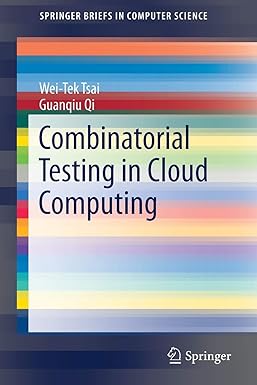Question
Java has more than ten modifiers that can be used in front of a class or a method declaration; among them are: public, protected, private,
Java has more than ten modifiers that can be used in front of a class or a method declaration; among them are: public, protected, private, static, abstract, final, native, synchronized, transient, and volatile. Many subsets and permutations (without repetition) of these modifiers can be used in a single declaration.
(a) [4 pts] Consider a simplified version of the problem. Write a context-free grammar (in EBNF form) for the language that contains all possible sequences formed from the three letters, x, y, and z, without multiple occurrences of any letter. For instance, xz, y, and zyx are in the language, while xyx is not.
(b) (2 pts) Based on your experience with the previous problem, comment on how complicated it would be to define a grammar rule for the Java modifier sequence in a class/interface declaration. Roughly estimate how many patterns need to be included in this grammar rule.
(c) (2 pts) The official Java grammar rule for class/interface declaration is shown below:
ClassOrlnterface Declaration:
{Modifier} (ClassDeclaration Interface Declaration)
The rule shows a Modifier component. How come Java can have this simple grammar rule? Does it define the exact set of legal class/interface declarations with modifiers? If not, give a counter example.
(d) [2 pts) Can you speculate how a compiler might handle this rule, so that all the requirements (such as no repetition) would be satisfied.
Step by Step Solution
There are 3 Steps involved in it
Step: 1

Get Instant Access to Expert-Tailored Solutions
See step-by-step solutions with expert insights and AI powered tools for academic success
Step: 2

Step: 3

Ace Your Homework with AI
Get the answers you need in no time with our AI-driven, step-by-step assistance
Get Started


